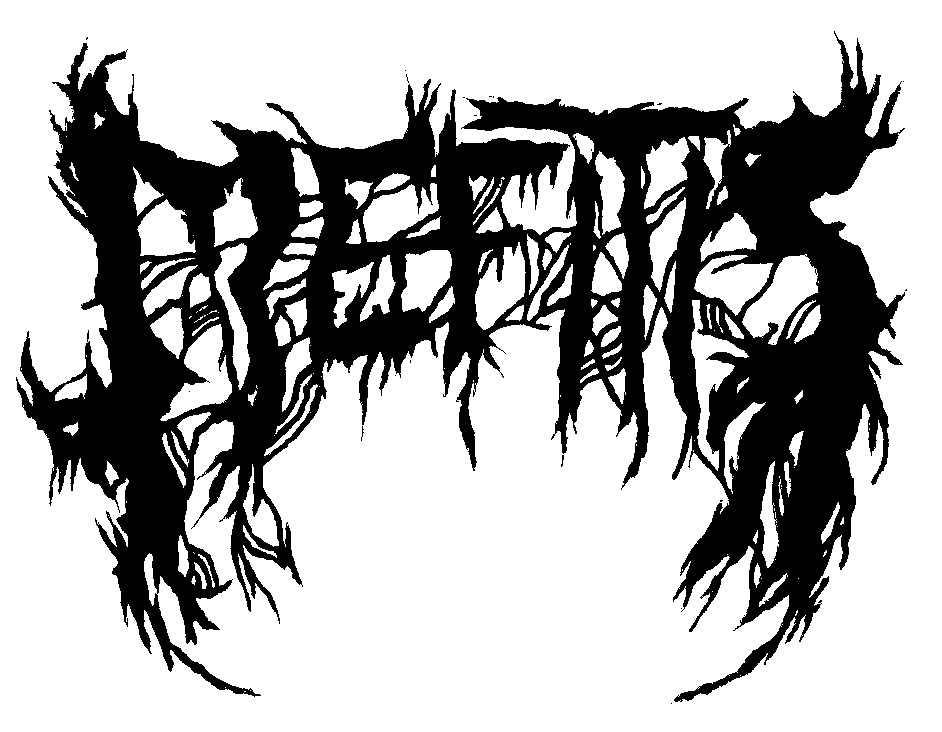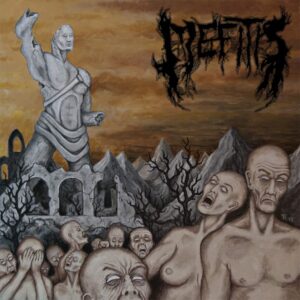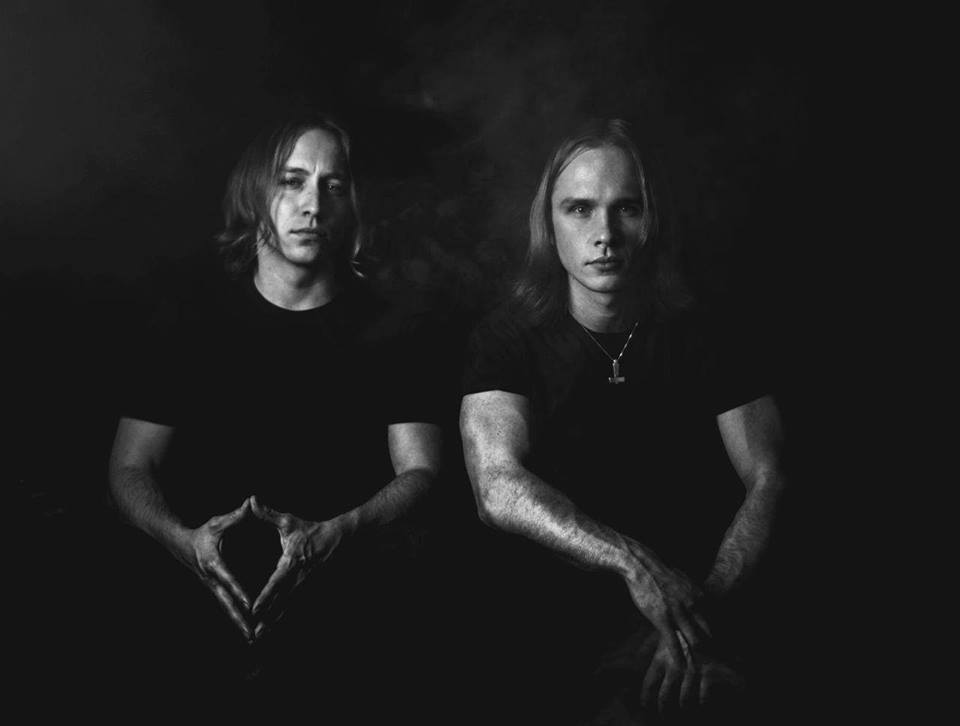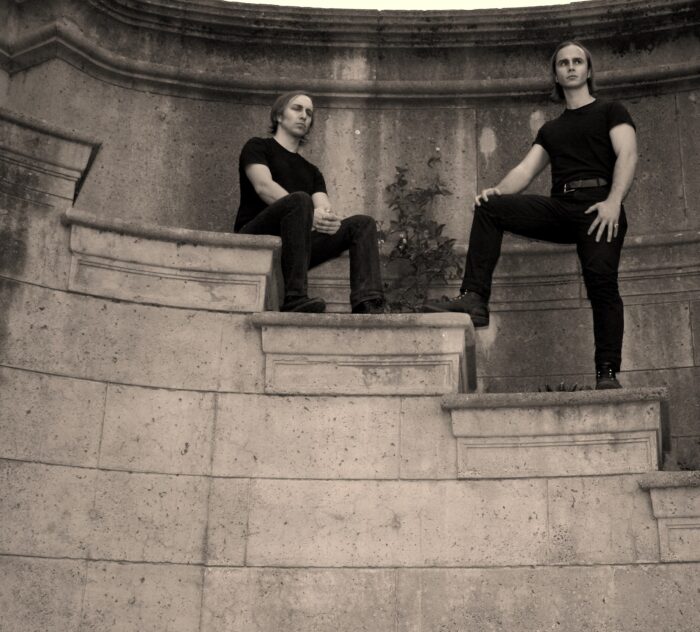
Info
- Band(s): Mefitis
- Interview Date: March 28, 2020
 Mefitis is one of the bright new hopes in the underground. They will hit you with a sound that unequivocally conjures the best of death metal, without succumbing to shameless plagiarism. If you have an affinity for bands like Demigod, The Chasm, Dissection, et al – then do yourself the profound courtesy of checking out their excellent debut album, “Emberdawn,” released in 2019. The following interview was conducted with Pendath and Vatha. (Jim Hexetomb)
Mefitis is one of the bright new hopes in the underground. They will hit you with a sound that unequivocally conjures the best of death metal, without succumbing to shameless plagiarism. If you have an affinity for bands like Demigod, The Chasm, Dissection, et al – then do yourself the profound courtesy of checking out their excellent debut album, “Emberdawn,” released in 2019. The following interview was conducted with Pendath and Vatha. (Jim Hexetomb)
Hails! To inaugurate this interview, please give us some details about the inception of the band.
P: Mefitis began in 2007. Vatha and I both were part of youth music program where you could use reserve rehearsal spaces and attend weekly community “jam sessions”. Once a week, there was something called “Metal Shop”, where metalheads would meet up. It was mostly deathcore kids (to give you an idea of the times back then). Vatha and I met, and got to talking about black and death metal. We both new the alternate guitar parts to The Somberlain, and played it in unison. That was when I asked if he wanted to come join a thrash band I had been in for a few weeks. When he came to practice, he started adding parallel minor 3rd harmonies to the riffs, and growls, making the music far more extreme. I was pleased, but the other bandmates were not and ended up quitting. That was when Mefitis began. Our goal was to write music that incorporated our favorite elements from classic black and death metal into a detailed, and unified sound. Although we only put out a couple demos back then, our modus operandi remains steadfast.
Music-wise, who are your biggest influences?
It is difficult to say. There are comparisons that have been made to our debut that run across the whole extreme metal gamut. The timeless metal classics formed our tastes and musical intuition. Additionally, we look at the promising elements of more obscure, 2nd tier releases throughout the years, and contemplate techniques from those that can be better harnessed. There are obvious fundamentals that can be recognized on Emberdawn. However, there are a few bands that we were particularly enthralled by during the composition process of this album, such as early Septic Flesh, early At the Gates, and Dawn. Outside of metal, Vatha and I both listen to a range of classical, traditional folk, electronic, post-punk, and anything that is stimulating. While we mostly try to maintain a traditional extreme metal aesthetic, and don’t intentionally bring in outside influences, they have all surely made an impact on our sensibilities.
 How long were you working on your debut album, “Emberdawn,” and how do you feel about the final result?
How long were you working on your debut album, “Emberdawn,” and how do you feel about the final result?
P: The meat of it spawned from a year and a half of overwhelming inspiration and disillusionment, but we spent a good three and a half years on Emberdawn. It is hard to quantify exactly. Some ideas came from our teenaged years, and were re-purposed/revamped. Does that count? …Because then it would be a decade’s worth of work. We also spent a hell of a lot of time on the production end; re-recording songs, adding fx, layering extra guitars, and other general mixing experimentation. Although all of the tracks were designed to function together, each one was recorded in separate sessions, which lent to them their own respective sonic idiosyncrasies, strengths, and weaknesses. This posed quite the challenge for mixing them into a unified package, and considerably delayed the release. No one has commented on inconsistencies between the tracks though, so I suppose our efforts were not unfruitful. Emberdawn is really where we figured out how to effectively produce music ourselves. It needed to be perfect, and we eventually got as close to that standard without delaying it for another half decade. There are very few elements I would change in retrospect, and absolutely no artistic choices we regret. It became much larger than we had ever intended it.
What can you tell us about the promotion regarding “Emberdawn”? Did the feedback meet your expectations?
V: There really was not a whole lot of promotion. We put out a single release that included two b-sides from Emberdawn, in order to garner some attention before releasing a full-length. Other than that, we maintained a meager social media presence, and sent our music out for review via e-mail (cold calls, more or less).
P: Vatha and I did not have specific expectations for feedback. We simply hoped that a few would truly “get” Emberdawn, and appreciate the painstaking compositional techniques and arrangement details we imbedded into each song to enhance the album’s overall meaning. We knew that some people would write it off, and others would show temporary, superficial interest. All of these perspectives have come to fruition; we were just unsure of what the ratio would be. I am grateful for how many people have resonated with our music, in spite of not having big label backing. Some of the “hot takes” were unanticipated, like people calling us “Demilich worship”. Jesus. Goes to show how much visuals inform people’s auditory perception. We could have played goddamn Radiohead cover songs and people would still say that from seeing our album cover. Looking at the metal community, it is difficult to ascribe any rhyme or reason to the hype-machine. Wholly mediocre releases are praised to no end, and there seems to be a lack of active listening and compositional understanding when I look at this community’s dialogue (even the reviews!). There is a race to formulate “year end lists”, all predicated on cheap, boneheaded platitudes like, “This shit is fucking filthy”. Such a “compliment” would be an insult to us. Prolonged time seems to be the best metric for meaningful feedback.
Tell us a bit about the artwork for “Emberdawn” and why you chose to work with Turkka G. Rantanen – Is there a theme behind it?
When Emberdawn was still in its formative stages, intended to be an EP, we had originally planned to use a piece by Vernon Hill from The New Inferno (1911). You can see the drawing behind the tray on our CD release. Vatha and I first saw this in an art book we found at a flea market, and it spoke to us. As Emberdawn grew in scope, we grew concerned over copywrite, and desired something original to represent it visually. Considering the grotesque mass of bodies on Vernon Hill’s piece, there was an obvious artist that excelled at that aesthetic: Turkka Rantanen. We are very happy with his paintings for us. It has unfortunately resulted in people making gratuitous comparisons to the Finnish bands that preceded us, even though our musical influences from them are negligible. But that is separate from the paintings themselves, and how they relate to the theme of Emberdawn.
Nowadays, he mainly does digital artwork, but we asked him to do a physical painting for us, and he reluctantly agreed. After many digital drafts, and long-winded e-mails on my behalf about what we were seeking, he worked his magic with the paint brush. I could go on and on about the creative process, but it might bore the reader. I’ll leave it at this: The use of digital modeling allowed him to incorporate a finer level of detail than was present on his old-school paintings. This is especially evident on the double painting. I’ll let Vatha explain the theme, as he’ll be able to better connect it the lyrics.
 Where does the inspiration for your lyrics stem from and what are they about?
Where does the inspiration for your lyrics stem from and what are they about?
V: I tend to avoid allegory, the lyrics are more parables describing possible worlds similar to our own. They draw from a well of discontent that filled our thoughts and discussions during the album’s inception. If there is a general theme to the album, it is the portrait of a people whose actions abet their own undoing. It is arrogance and defiance in the face of unending decay, it is self-immolating to feel warmth.
Stylistically, I like fairly simple words and devices, internal rhymes and alliterations. My lyrics tend not to be overlong, I do not force additional stanzas simply to have more words on the page. I find it highly irritating when a band has too many lyrics, often causing every moment of the song to be littered with barking (what I call “bored vocalist syndrome”). When writing lyrics for Emberdawn I was very much drawn to words derived from Old English (or “Anglish”) as a source for archaic and uncommon expressions. The album title itself is one of these Germanic sounding compound words, and other oddities such as “widdrim” were also found while delving into Anglish vocabulary. The aesthetic of it is personally appealing, and I also feel it sets us apart from most metal bands out there. Each song title was deliberated over as methodically as each riff, evenings were spent poring over strange words until they somehow fit into a phrase both elegant and incisive.
What are your top 10 albums?
V: I think we can roughly agree on a top 10 metal records, at least of the death and black variety. A few others I’d like to highlight of my own personal liking are Scott Walker “3,” Mercyful Fate “Don’t Break the Oath,” XTC “Drums and Wires,” Stara Rzeka “Cień chmury nad ukrytym polem,” Robbie Băsho “Songs of the Stallion,” Django Reinhardt “Djangologie,” Muzsikas “Prisoners’ Songs,” Aria “Игра С Огнём,” Yes “Close to the Edge,” American Music Club “California.”
P: Vatha mentioned a lot of gold outside of metal. I can’t possibly make a canonical top 10 list in any meaningful way. We revere the great classics of black and death metal, many of which are so obvious it would be pointless to even mention––There is not some unknown band from Latvia or something that is going to make it’s way into our most esteemed records. I’ll just throw in a few standouts off the top of my head: At the Gates “The Red in the Sky is Ours”, Sacramentum “Far Away from the Sun”, Emperor “In the Nightside Eclipse”, Kvist “For kunsten maa vi evig vike”, Septic Flesh “Mystic Places of Dawn”, Pestilence “Consuming Impulse”, Morbid Angel “Altars of Madness”, Immolation “Here in After”. I am probably missing dozens of candidates that I’ll regret later.
What’s your opinion on the current state of the underground? Are there any bands you find worthy of support?
V: The utter glut of underground music out there is to me largely inconsequential. I think there is a lot of cheap praise tossed at dozens of new records each month, which are quickly forgotten at the turn of the calendar page. To be sure, there are bands out there doing great things, but either they are a very small subset of metal musicians or I am lazy in my musical expeditions. I rather like the bands coming out of the Netherlands at the moment, like Sammath and Kjeld. The Greek scene too has held up over the years, producing works which if not revolutionary are true to their own impetus and aesthetic. Macabre Omen produced one of my favorite albums from the last decade, I look forward to whatever they do next.
P: Overall, I am unimpressed with the current state of metal. This is not to say there aren’t a few artists that are creating worthwhile music, but the prevalence of uninspired rehash bands is disheartening. 10+ years ago, when plastic deathcore, Myspace DSBM, retro/pizza-thrash seemed inescapable, I would have relished in the OSDM revival. Now that it’s here…meh. Vatha mentioned some worthy acts, but Polemicist cannot be excluded. I also have high hopes for a band residing near us called Enshrouded. Bands like Thantifaxath and Yellow Eyes have stood out to me, if rather tangential to us, but I have not made my mind up on them yet. The community has become ever more focused on vapid year-end lists, soon moving on to the next batch to consume like a single-use-water-bottle with nice packaging. Journalists use the same old buzzwords to describe music with the same old techniques. There is not an obvious path for metal to embark upon, like there was a couple decades ago. The low hanging fruit has all been harvested, so it takes a lot more to make a meaningful statement nowadays. I would like to hear more bands that manage to move me, while showing true ambition in their compositions and arrangements. Innovation in mere aesthetics, or sounding like bands I like, is not enough.
How would you describe your music to those who haven’t it heard it before?
V: Heavily dynamic song structures, a sense of progression or what I might call “adventure” from beginning to end. In this timespan, chaos may give way to structure, or dissonance may erupt from graceful harmony. It is ultimately very dark music, but not nihilistic. Each song grows as a forest fire, spreading and consuming with its cackling din, giving way after some time to charred woods and fertile earth.
P: Vatha summed it up well enough. I’ll just add this: in spite of our album cover, we are not Finndeath/Demilich worship. My following description of dark metal will give any newcomer a better idea of our stylistic essence.
Can you please specify on why you chose to label your music as “Dark Metal”? Are you, by any chance, fans of Bethlehem?
Yes, though I am the bigger fan of that particular album while Pendath prefers “Dictius Te Necare.” I have always admired Bethlehem for endeavoring to coin a new style of metal with their debut. Acknowledging their use of “dark metal” to describe a hybrid of black, doom, and death metal, we decided to adopt the tag as well. Though our brand has far more death in it, of course.
P: It’s funny to see how removed so-called “dark metal” bands are from Bethlehem’s declaration on their debut, playing a tacky sort of symphonic goth metal that we call “corset-core”. This iteration of the subgenre never really took off, so we decided to reclaim it, and carry the torch of Bethlehem (even though we sound quite different). “Blackened death metal”, or worse, “deathened black metal”, are clunky titles that point toward bands that only lean toward one of the two, while utilizing a cheapened aesthetic from the other. One might consider “dark metal” a mere hybrid, but we seek to form it into a unified identity. There is no good reason to keep the different techniques used by black, death, and doom metal in separate boxes. Dark metal should take the most compelling elements of each, and purge the tropes.
 What kind of films/books are you into? Cite some of your favorites.
What kind of films/books are you into? Cite some of your favorites.
V: I am currently delving heavily into The Silmarillion, reading and re-reading each chapter to fully appreciate the world-building (particularly the invented language). Also, current events have inspired me to re-read McCarthy’s The Road. I enjoy the movie adaptation of The Road, and other dark fare like Stalker, The Ascent, Pathfinder (1987), The Thing, The Wicker Man (1973).
P: Just finished reading Voltaire’s Candide, and rather enjoyed his sarcastic and satirical take on semi-historical accounts of the New World. Now I am re-reading Dostoyevsky’s Crime and Punishment. Ken Follett’s Pillars of the Earth is a modern fantasy classic. John Steinbeck’s work, especially East of Eden, stirs deep Romantic longing in me for a more pastoral America. Obviously Tolkien’s work is sacred, although I can’t lay claim to trekking The Silmarillion like Vatha! However, I did force myself to read Homer’s Odyssey in a non-highschool setting, which was rewarding. All in all, I ought to read more great literature, but I don’t write the lyrics for Mefitis, so who cares?
To wrap things up, tell us about your future plans for Mefitis, and how people can get hold of your merchandise. Thanks for answering my questions.
V: We are working steadfastly on a new EP of material for release this year. The songs are quickly approaching completion, at which time we will record and mix the release at our studio. This is not the same place where Emberdawn was recorded, which due to rather interesting circumstances is no longer available for our use. That tale may be told another time. For now, expect the most truly Dark Metal work from Mefitis yet. It incorporates concepts and influences perhaps too wild to have been written into the debut.
P: That’s right. Not to mention our second album, which is already recorded and took over 10 years to complete, with many failed attempts and full revamps on the compositions. Emberdawn was originally intended to be a short release to get us unstuck from such a large project, and free us to write new music. Of course, that ended up turning into its own monster. Since the fundamental ideas of the second album were written as teenagers, it contains a somewhat different ethos than Emberdawn. Therefore, we decided to release an EP that extends on our debut’s direction, in order to fortify our “dark metal” statement before we throw a curve-ball at everyone.
We put over $500 into upgrading our Emberdawn vinyl release into a gatefold, along with art for the second album, etc. We want to make merchandise, but it is not at the top of our priorities right now. As a new band, our money is limited, and will go into serving our music. Perhaps one day, we’ll get around to shirts and patches, and whatever else that we can print our logo on now. For now, if any labels are willing to make the investment, you’re welcome to do it! Hell, if you want to make a bootleg, go right ahead.
Thanks again for the review of Emberdawn, and for putting these questions together. Cheers!
